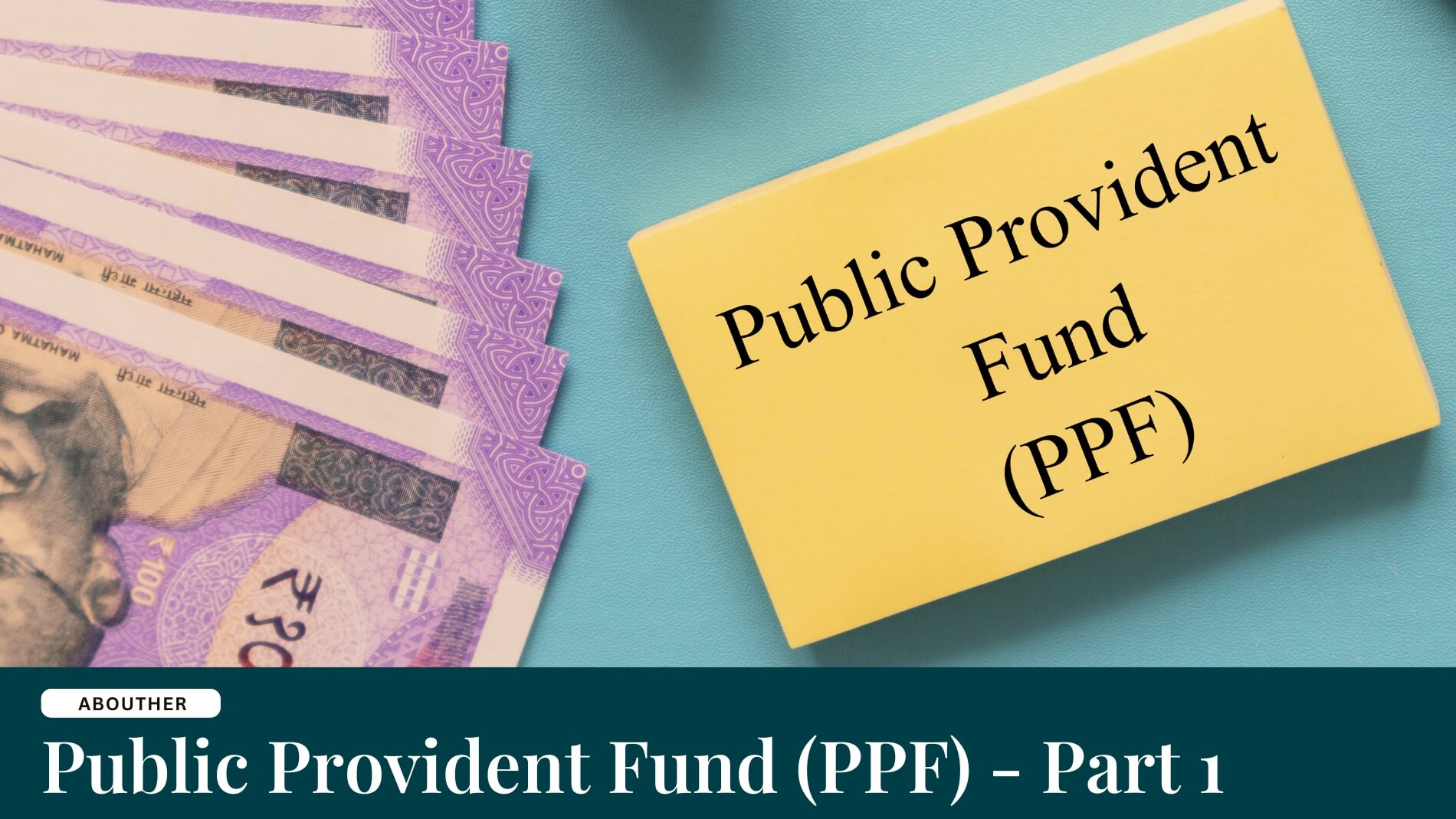Public Provident Fund (PPF) – Part 1
The Public Provident Fund (PPF) is one of the most popular long-term investment schemes for individuals looking for secure and stable returns. Launched by the Government of India, the scheme aims to promote savings while providing attractive benefits such as tax exemptions and guaranteed returns. The interest rate is periodically set by the government, ensuring stability and predictability for investors. Since the returns are not market-linked, PPF is considered a safe option, especially for risk-averse individuals who want to avoid market volatility.
Moreover, the PPF enjoys an Exempt-Exempt-Exempt (EEE) status, meaning that the investment, the interest earned, and the maturity proceeds are all tax-exempt.
Key Features of PPF
1. Eligibility to Open a PPF Account
- Indian Citizens: Only Indian residents are eligible to open a PPF account.
- Minors: A PPF account can also be opened for minors under the guardianship of a parent or legal guardian.
- Non-Residents: Non-Resident Indians (NRIs) cannot open new PPF accounts. However, if an account was opened while residing in India, it remains active until maturity but cannot be extended for additional 5-year blocks once the original term is completed.
2. Investment Limits and Contributions
- Minimum Investment: The minimum amount that must be deposited annually is Rs. 500.
- Maximum Investment: A maximum of Rs. 1.5 lakh can be invested in a PPF account in each financial year.
- Contributions can be made in monthly instalments or as a lump sum.
- Payment Modes: Deposits can be made using cash, cheque, demand draft (DD), or online bank transfer.
Also Read: Smart Savings: A Complete Guide to Fixed Deposits – Part 1
Depositing the minimum amount every financial year is mandatory to keep the account active. Failure to do so may lead to the account becoming inactive, although it can be revived by paying a penalty and the missed deposits.
Account Opening and Initial Deposit
- A PPF account can be opened at any recognised bank (public or private) or a post office with an initial deposit of Rs. 100.
- The PPF account offers flexibility in contributions, making it accessible to individuals with varying income levels.
Lock-in Period and Extension Options
- The PPF has a mandatory lock-in period of 15 years from the date of account opening. During this period, funds cannot be withdrawn except under certain conditions.
- After the 15-year period ends, account holders can choose to extend the account in blocks of 5 years. There is no limit to the number of times the account can be extended in these 5-year increments.
Withdrawal Rules
- Full withdrawal of the PPF balance, including the principal and interest, is allowed only after the completion of the 15-year lock-in period.
- Partial withdrawals are permitted from the 7th financial year onwards, subject to certain conditions. The amount that can be withdrawn is capped at 50% of the balance at the end of the 4th year or the preceding year, whichever is lower.
Loan Facility
- Account holders can avail of loans against their PPF balance between the 3rd and 6th financial years of opening the account.
- The loan amount can be up to 25% of the balance in the account at the end of the 2nd year preceding the year in which the loan is applied.
- The loan must be repaid within 36 months. After repaying the first loan, account holders can apply for another loan if they are still eligible.
Also Read: Smart Savings: A Complete Guide to Fixed Deposits – Part 2
Interest Rate and Calculation
- The interest rate on PPF is determined by the Government of India and is subject to quarterly revisions. The current rate is 7.1%.
- The interest earned is higher compared to regular savings accounts offered by commercial banks.
- PPF interest is compounded annually and credited to the account at the end of the financial year.
Interest Calculation Details:
- Interest is calculated monthly on the lowest balance in the account between the 5th day and the end of the month.
- Deposits made before the 5th of the month earn interest for that month.
- Deposits made after the 5th of the month do not earn interest for that month.
This means that timely contributions before the 5th of each month can help maximise the returns due to the compounding effect.
Tax Benefits
- Investments in PPF are eligible for tax deductions under Section 80C of the Income Tax Act, up to Rs. 1.5 lakh per financial year.
- The interest accrued on the PPF balance is exempt from tax.
- The entire maturity amount, including the accumulated interest, is completely tax-free.
This triple exemption status makes PPF one of the most tax-efficient investment options.
Summary of Benefits
- Low Risk: Since the scheme is government-backed, there is no risk of default or losses due to market fluctuations.
- Guaranteed Returns: PPF offers predictable and stable returns.
- Tax Efficiency: PPF provides tax benefits on the invested amount, the interest earned, and the maturity proceeds.
- Flexible Tenure: After the initial 15-year lock-in, investors can extend the tenure in 5-year blocks according to their financial goals.
Who Should Invest in PPF?
- Individuals with a low-risk appetite looking for a safe investment option.
- Taxpayers who want to reduce their taxable income while growing their savings.
- Those looking for a long-term investment to meet future financial goals, such as children’s education or retirement.
By combining safety, tax efficiency, and the power of compounding, the PPF remains an excellent choice for individuals seeking long-term financial security.
Love learning about impactful women?
Check out our new series, Empowerment Series: “Women Who Lead”
Share This On Social
![Sangeeta-Relan-AH-525×410[1]](https://slategray-flamingo-696901.hostingersite.com/wp-content/uploads/2024/06/Sangeeta-Relan-AH-525x4101-1.jpeg)
I’m Sangeeta Relan—an educator, writer, podcaster, researcher, and the founder of AboutHer. With over 30 years of experience teaching at the university level, I’ve also journeyed through life as a corporate wife, a mother, and now, a storyteller.
Recent Posts


















